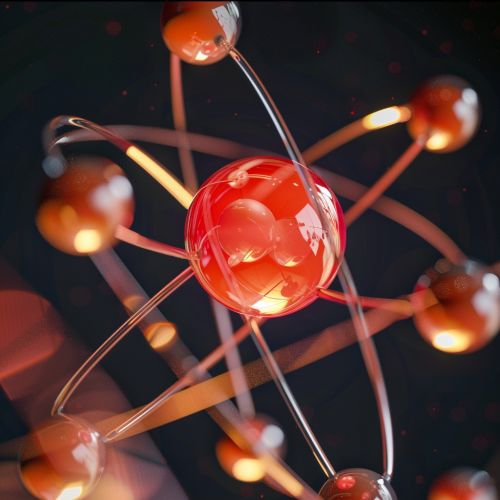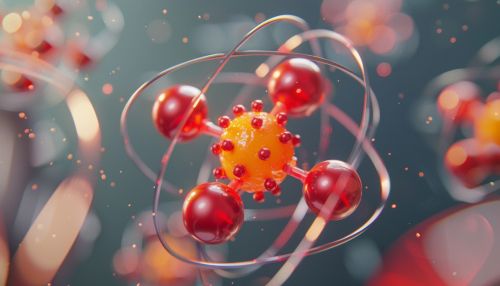Strong nuclear force
Introduction
The strong nuclear force, also known as the strong force or nuclear strong force, is one of the four fundamental forces of nature, alongside gravity, electromagnetism, and the weak nuclear force. It is the force that holds the most basic building blocks of matter, protons and neutrons, together in the nucleus of an atom. The strong force is about 100 times stronger than electromagnetism, a million times stronger than the weak force, and about 10^38 times stronger than gravity, making it the strongest force in nature.


Properties of the Strong Nuclear Force
The strong force has several unique properties that distinguish it from the other fundamental forces. These properties include its strength, range, charge independence, and saturation.
Strength
The strong force is the strongest of the four fundamental forces. It is approximately 100 times stronger than the electromagnetic force, a million times stronger than the weak force, and about 10^38 times stronger than gravity. However, its strength rapidly decreases with distance, becoming insignificant beyond distances of about 1 femtometer (10^-15 meters), roughly the size of a small nucleus.
Range
The range of the strong force is very short, typically on the order of a femtometer. This is due to the fact that the force carriers of the strong force, known as gluons, are themselves charged under the strong force. This causes them to interact with each other, forming "flux tubes" or "strings" that confine the force to a very short range.
Charge Independence
The strong force is charge-independent, meaning it acts equally between a proton and a neutron, a neutron and a neutron, or a proton and a proton. This is in contrast to the electromagnetic force, which acts differently between particles of different charges.
Saturation
The strong force exhibits a property known as saturation. This means that each nucleon (proton or neutron) in a nucleus interacts strongly with only a few nearest neighbors, regardless of the total number of particles in the nucleus. This property is what allows nuclei to exist with more than just a few nucleons.
Theoretical Framework
The theoretical framework that describes the strong force is known as quantum chromodynamics (QCD). QCD is a component of the standard model of particle physics, which describes all known fundamental forces except gravity.
QCD is a type of quantum field theory that describes the interactions of quarks and gluons, the fundamental particles that make up protons and neutrons. In QCD, the strong force is mediated by the exchange of gluons between quarks. This is similar to how the electromagnetic force is mediated by the exchange of photons between charged particles.
One of the key features of QCD is the concept of color charge. Unlike electric charge, which can be either positive or negative, color charge comes in three types, often referred to as red, green, and blue. Quarks carry color charge, while gluons carry a combination of color and anti-color.
Another important feature of QCD is the phenomenon of confinement. This is the principle that quarks and gluons are never observed in isolation, but are always found within composite particles known as hadrons. This is due to the fact that the strong force becomes stronger with distance, making it impossible to separate quarks or gluons from each other.
Role in the Universe
The strong nuclear force plays a crucial role in the structure and behavior of matter in the universe. It is responsible for holding atomic nuclei together and for the processes that power the sun and other stars.
Atomic Nuclei
The strong force is responsible for holding protons and neutrons together in the nuclei of atoms. Without the strong force, the repulsive electromagnetic force between protons would cause atomic nuclei to disintegrate.
Stellar Processes
The strong force also plays a crucial role in the processes that power the sun and other stars. In nuclear fusion, the process that powers the sun, the strong force allows protons to come close enough together to overcome their electromagnetic repulsion and fuse together, releasing a large amount of energy in the process.
